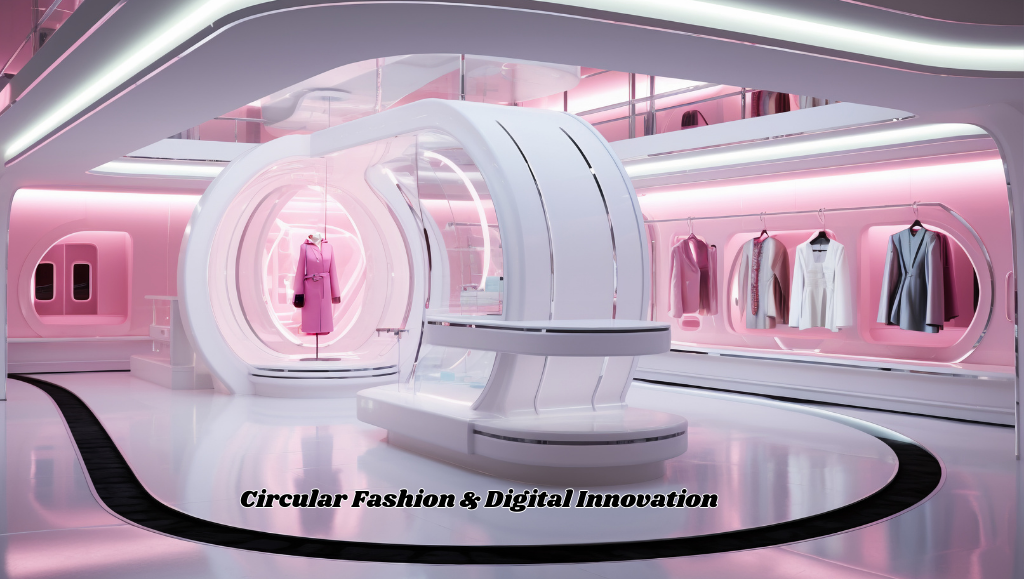The future of fashion industry is no exception, with industry thought leaders learning how technology can complement and advance the world of fashion. Fashion leaders polled in our annual BoF–McKinsey State of Fashion Executive Survey were just as pessimistic as last year. Customers seek a coherent online shopping experience, although physical retail outlets continue to be valued.
Digital and 3D Fashion Design
The future of fashion design software has advanced to the point that digital and 3D fashion design has become the norm in the industry. The designers stretch their boundaries and move forward in ways that previously would have been impossible.
Key points
- Fashion Design in 3D Printing
- Virtual Fashion and Digital Clothing
- The Impact of Social Media
- Circular fashion market growth
AI in Fashion and Sustainability Operations
By making the fashion and sustainability industries smarter, greener, and more customer-focused, artificial intelligence is revolutionizing both industries. AI may be used by brands to anticipate demand, cut down on overproduction, and provide eco-friendly designs with little waste; therefore, balancing creativity with responsibility guarantees that fashion develops into a future where environmental preservation and style coexist, in addition to increasing efficiency.
What’s coming up in the fashion industry?
Instead of sitting back and waiting to see what’s popular, consumers expect firms to be proactive and develop methods to present fresh, creative ideas. A more thoughtful and sustainable approach, an emphasis on quality rather than lower price points, and the integration of technology into the fashion business are some of the changes the fashion industry is beginning to undertake to suit the growing generation of customers.
The Fashion and Reality Collide
Jada Martinez of Fair Lawn, New Jersey, remarked, “The Tommy Hilfiger trip was exciting.” “I gained a genuine understanding of the industry by listening to Director of Merchandising Julia Levine discuss showroom design, seasonal strategy, retailer pricing, and other topics. Learning with Professor Logan and Julia made it clearer to me that this is what I really want to do. Diamanté Logan, a former Tommy Hilfiger merchandiser and LIM alumnus.
Use VR and 3D technology to enhance the immersive experience of shopping.
Using VR and 3D technologies together may make shopping a really engaging experience. Customers may explore a virtual store, browse the aisles, and view everything in true three dimensions rather than only viewing flat product images. This promotes confidence and a sense of connection to the brand. To put it briefly, VR and 3D turn ordinary shopping into an interesting activity.
Conclusion
The Future of Fashion design software has advanced to the point that digital and 3D fashion design has become the norm in the industry may be used by brands to anticipate demand, cut down on overproduction, and provide eco-friendly designs with little waste, therefore balancing creativity with responsibility. Instead of sitting back and waiting to see what’s popular, consumers expect firms to be proactive and develop methods to present fresh, creative ideas.
What Does Voice Mean in a Fashion Design Portfolio
FAQs
Which careers will be in favor in the future?
Pattern creator, visual merchandiser, fashion influencer, fashion event director, digital designer, avatar stylist, and personal stylist.
Regarding sustainability, how do you see the UK fashion retail sector developing?
KF: Less is more. Higher pricing, lower volumes. More diversity.
What are the future careers in fashion?
Personal stylist, fashion influencer, fashion event director, digital designer, visual merchandiser, and avatar stylist.
Can AI take the position of product developers and fashion designers?
Creatives have more time to develop and concentrate on crafting stories when AI takes care of tedious or data-intensive activities.

